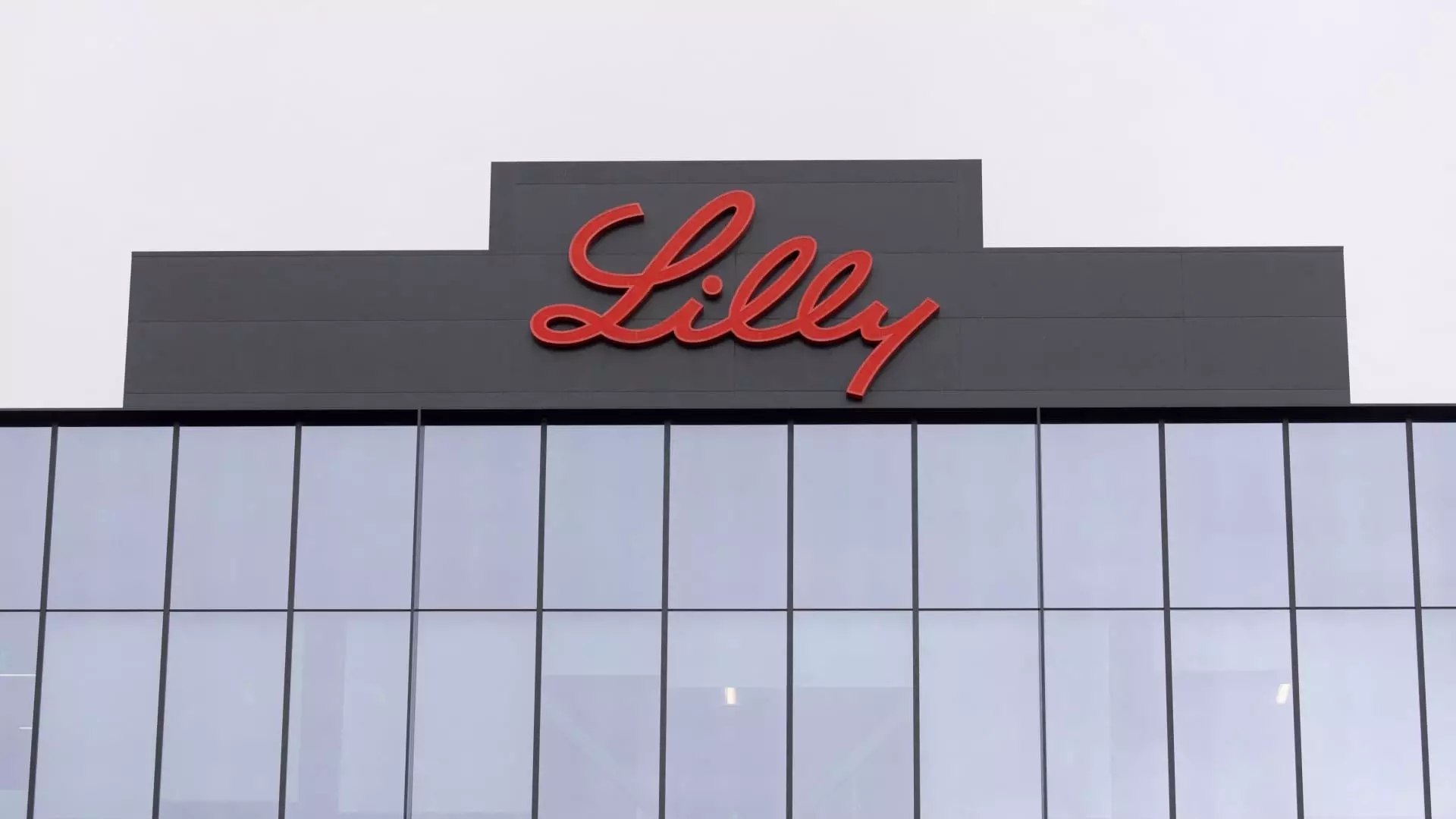Eli Lilly, a well-respected name in the pharmaceutical industry, recently faced significant financial challenges in its third-quarter report. The company fell short of Wall Street expectations regarding both profit and revenue, pushing its stock down drastically. This shift stems largely from disappointing sales of two major products: Zepbound, aimed at weight loss, and Mounjaro, a diabetes treatment. The resulting tension in the market not only affected Eli Lilly’s standings but also had repercussions for competitors, particularly Novo Nordisk.
The recent earnings announcement revealed that Eli Lilly slashed its full-year adjusted profit guidance, lowering projections from $16.10 to $16.60 per share down to a revised forecast of $13.02 to $13.52 per share. This was indeed a substantial decrease and sent waves through the financial markets. The price of Eli Lilly’s shares plummeted by over 12% in morning trading, a testament to investors’ loss of confidence following the announcement.
Revenue, too, was a cause for concern. Eli Lilly anticipated sales between $45.4 billion and $46 billion but had previously aimed for as much as $46.6 billion. This misstep indicates substantial challenges in both product performance and overall market conditions. Analysts were also caught off guard, expecting quarterly earnings per share of $1.47, whereas the reported figures were significantly lower at $1.18. Revenue of $11.44 billion, while up 20% year over year, was still below the expected $12.11 billion.
A closer examination of Eli Lilly’s flagship products reveals critical insights into these financial struggles. For the third quarter, Zepbound reported sales of $1.26 billion, falling remarkably short of analysts’ expectations of $1.76 billion. This alarming trend marks the third full quarter of Zepbound in the U.S. market since being approved, which raises questions about the drug’s market penetration and consumer reception.
Mounjaro’s situation is somewhat similar. Although the diabetes treatment produced over $3 billion in revenue, doubling its performance from a year ago, it still did not meet the anticipated $3.77 billion. The discrepancy between actual performance and market expectations illustrates a serious misunderstanding of demand dynamics in Eli Lilly’s operating environment.
It is essential to consider the backdrop of increasing demand for incretin drugs, like Zepbound and Mounjaro. Both drugs target appetite regulation and blood sugar management, and their popularity has forced Eli Lilly and competitors like Novo Nordisk to invest billions in increasing manufacturing capabilities. Despite some improvements in supply levels earlier this year, the lingering issues of inventory availability seem to continue impacting sales.
David Ricks, CEO of Eli Lilly, emphasized that the disappointing quarterly results were not reflective of supply issues but were influenced primarily by decreases in inventory among wholesalers. Furthermore, plans to ramp up marketing and promotional activities for Zepbound were delayed, which undoubtedly hindered potential sales growth. He noted that customer service levels and unmet prescription fulfillment were key reasons behind the cautious approach to marketing.
Despite the current challenges, Eli Lilly remains optimistic about future production capacity. The company projects that by the second half of 2024, incretin drug production will increase by 50% compared to the corresponding period in 2023. This marks a strategic response to surging demand. Furthermore, Ricks hinted at plans for even greater manufacturing capacity expansions going into 2025.
Interestingly, Eli Lilly’s ability to maintain a competitive edge is also threatened by the actions of compounding pharmacies. These entities produce customized and sometimes cheaper alternatives to Eli Lilly’s products, posing competitive challenges that the corporation must navigate carefully. The FDA’s decision to remove tirzepatide, the active ingredient in Zepbound and Mounjaro, from its shortage list has elicited strong pushback from these pharmacies, further complicating the market landscape.
In summation, Eli Lilly’s recent third-quarter earnings report presents a complex picture of challenges and opportunities. While the company is grappling with disappointing sales and resource management issues, the strategic plans laid out for boosting production and overcoming competitive threats could pave the way for reinvigorated growth. However, the pressing need to restore investor confidence and effectively market its products remains paramount for Eli Lilly as it heads into an uncertain economic climate. Investors, analysts, and healthcare consumers alike will be watching closely to see how the company navigates these treacherous waters in the coming months.

